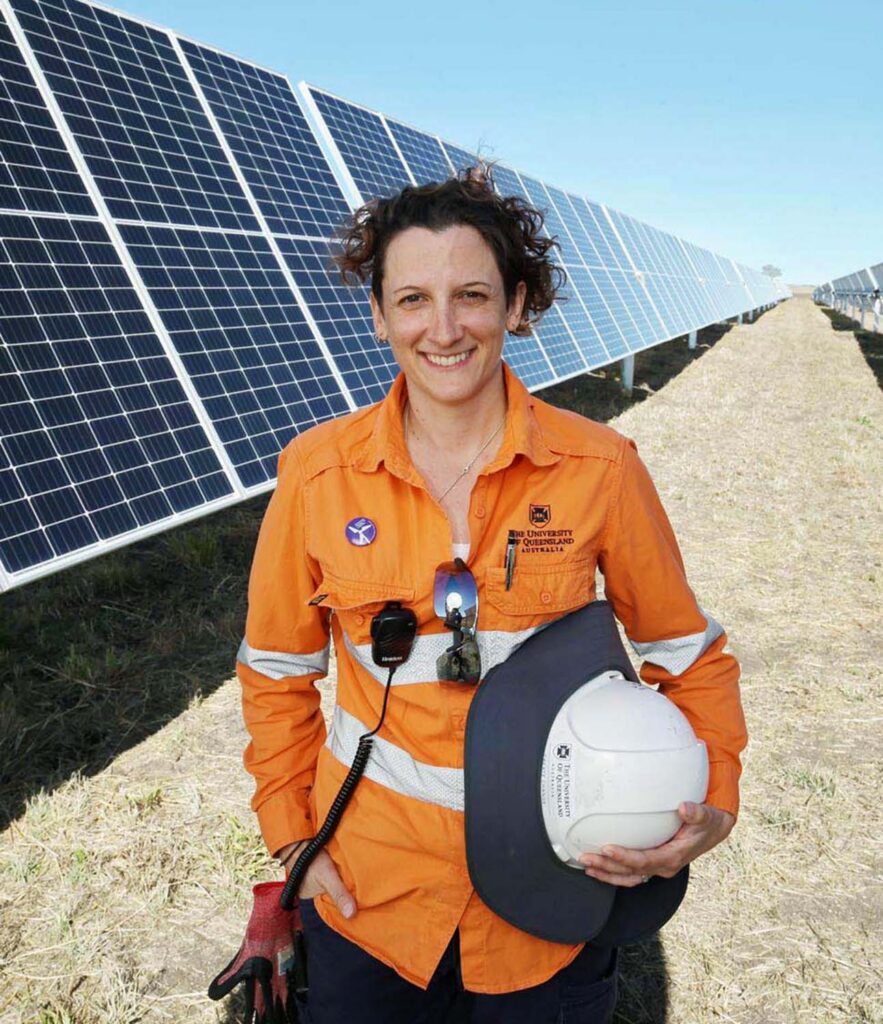I remember it like it was yesterday, the hum of the old desktop computer, the glow of the screen illuminating my determined face. Outside, the world was waking up to a new dawn, but inside, I was already dreaming of a different kind of dawn: one powered by the sun, the wind, and the relentless tides. I wanted to be a part of the renewable energy revolution, to help build a cleaner, more sustainable future. The problem? My bank account looked about as green as a desert. Education, especially in a cutting-edge field like sustainable energy or environmental engineering, felt like a luxury I couldn’t afford.
That’s when the word "scholarship" entered my vocabulary, not as a distant dream for academic superstars, but as a very real, tangible pathway. It wasn’t easy, let me tell you. It felt like trying to find a needle in a haystack, a tiny beacon of hope amidst a sea of financial aid forms and intimidating application portals. But I knew, deep down, that there had to be a way. And if I could find it, so can you.
My first step was a clumsy dive into the internet. I typed in "renewable energy scholarships" and was immediately overwhelmed. Pages and pages of results popped up, some helpful, some confusing, many looking like they hadn’t been updated since the first solar panel was invented. It felt like I was trying to map an unknown territory with a crumpled, outdated map. But I learned quickly that the journey to funding your clean energy dreams is less about finding a single pot of gold and more about understanding the landscape, knowing where to dig, and being persistent.
Let me tell you about the different kinds of treasure chests I discovered along the way. You see, scholarships aren’t a one-size-fits-all deal. They come from all sorts of places, each with its own set of keys.
First, there are the university-specific scholarships. When I was looking at different programs for green technology and environmental studies, I quickly realized that many universities offer their own funding. These are often tied to specific departments, like an engineering faculty offering grants for students pursuing a degree in wind energy or solar technology. The trick here is to dig deep into the university’s financial aid section, and don’t be afraid to reach out directly to the department head or the admissions office. I remember emailing a professor whose research aligned with my interests, and not only did he offer some insights into their program, but he also pointed me towards a specific departmental scholarship I had completely overlooked on their website. It was a small one, but every bit counts, right?
Then there are the government-funded programs. These are often national or regional initiatives aimed at boosting expertise in critical areas, and renewable energy is definitely one of them. I found that governments, both local and federal, are increasingly investing in the energy transition, and that includes investing in the people who will make it happen. These scholarships might be for specific levels of study – undergraduate, graduate, or even postdoctoral research in areas like sustainable infrastructure or energy efficiency. Keep an eye on government education portals or energy department websites. They might not always scream "scholarship!" but often have sections on workforce development or research grants that can include funding for students.
My search also led me to non-profit organizations and foundations. These are often passionate about specific causes, and many are dedicated to environmental protection, climate action, and promoting sustainable practices. I found organizations that focused on empowering women in STEM, or supporting students from underrepresented backgrounds entering fields like renewable energy engineering. These groups often have a clear mission, and if your personal story and aspirations align with their values, you stand a great chance. I remember spending hours crafting an essay for one such foundation, detailing my passion for clean energy and how I planned to contribute. It wasn’t just about my grades; it was about my vision.
And let’s not forget corporate scholarships. This was a revelation for me! Many large companies in the energy sector, especially those heavily involved in renewable energy development – think solar panel manufacturers, wind turbine companies, or utilities transitioning to green power – offer scholarships to attract future talent. They want bright, passionate individuals to join their ranks, and funding your education is a smart way for them to invest in their future workforce. I recall seeing programs from companies like Siemens Gamesa, Vestas, or even smaller, innovative startups looking for students studying subjects like energy storage, grid modernization, or even policy related to the energy transition. These often come with the added bonus of potential internships or even job offers after graduation, which is like hitting the jackpot.
Finally, there are international scholarships. If you’re open to studying abroad, the world really opens up. Many countries are at the forefront of renewable energy research and implementation, and they offer attractive scholarship programs to draw in international talent. Places like Germany, the Netherlands, and Scandinavian countries are particularly strong in this area. My friend, who ended up studying wind power in Denmark, found an amazing program that covered almost all her expenses. It was a rigorous application process, but the experience she gained was invaluable.
So, where do you start looking, once you know the different types? Well, I built my own little treasure map.
- University Websites (and direct contact): As I mentioned, this is your first stop. Don’t just look at the general financial aid page. Dive into specific departmental pages, faculty research groups, and even course descriptions. If you find a professor doing work you admire, a polite email expressing your interest and asking about funding opportunities can go a long way.
- Scholarship Databases: Websites like Fastweb, Scholarship.com, Chegg Scholarships, and others can be incredibly useful. But here’s a tip: be specific with your keywords. Instead of just "scholarship," try "renewable energy scholarship," "environmental science grant," "solar energy funding," "wind power education," or "sustainable technology tuition aid." The more specific you are, the less noise you’ll have to sift through.
- Professional Organizations: Groups like the Institute of Electrical and Electronics Engineers (IEEE), the American Society of Mechanical Engineers (ASME), or associations focused on specific renewable technologies (e.g., American Solar Energy Society, American Wind Energy Association) often have their own scholarship programs or list opportunities from their partners. These organizations are all about fostering the next generation of professionals, and that includes helping with educational costs.
- Company Career Pages: Yes, really! Go directly to the websites of major renewable energy companies. Look for sections on "careers," "community," or "sustainability." They often announce their scholarship programs there.
- Government Portals: Check the websites of your country’s Department of Energy, Environmental Protection Agency, or equivalent bodies. They often have grant and scholarship programs linked to national energy goals.
Now, finding them is one thing, but actually getting them is another. This is where the real work begins, and where I learned some of my most valuable lessons.
Start Early, Stay Organized. This cannot be stressed enough. Scholarships have deadlines, and missing one is like finding the treasure map but arriving after the treasure has been dug up. I created a spreadsheet with scholarship names, deadlines, requirements, and what I needed to submit. This kept me sane.
Understand the Requirements. Each scholarship is unique. Some might prioritize academic merit, looking for high GPAs and test scores. Others might focus on financial need. Many, especially in renewable energy, will heavily weigh your passion, your extracurricular activities, and your commitment to the field. Do they want an essay? A letter of recommendation? A portfolio? Know exactly what they’re asking for.
Craft a Compelling Personal Statement or Essay. This, for me, was the make-or-break element. It’s your chance to tell your story, to show them who you are beyond the numbers. I wrote about my first visit to a wind farm, the awe I felt, and how it ignited my desire to contribute. I talked about a small solar panel project I worked on in high school, even if it was just a hobby. I made sure to connect my personal experiences and aspirations directly to the scholarship’s mission. Don’t just reiterate your resume; let your personality and passion shine through. Be authentic. Use vivid language. Make them feel your enthusiasm for clean energy.
Get Strong Letters of Recommendation. Choose people who know you well and can speak to your strengths, your work ethic, and your potential in the renewable energy field. A science teacher who saw your dedication in a project, a community leader you volunteered with on an environmental initiative, or a mentor who witnessed your commitment – these are the people who can write impactful letters. Give them plenty of notice and provide them with information about the scholarship and your goals, so they can tailor their letter effectively.
Highlight Relevant Experience. Even if you haven’t built a full-scale solar farm yet, think about what you have done. Did you participate in an environmental club? Volunteer for a local park clean-up? Start a recycling program at your school? Work on a science fair project related to energy? Every little bit shows your genuine interest and initiative. These experiences, no matter how small they seem, demonstrate your commitment to a sustainable future and can set you apart from other applicants.
Show Your Passion and Commitment. This ties into the essay, but it goes beyond. Scholarship committees aren’t just looking for smart people; they’re looking for dedicated people who will make a real impact. They want to see that you’re not just chasing a trend but are genuinely invested in the future of clean energy. If you can articulate why you want to study renewable energy, what you hope to achieve, and how this scholarship will help you get there, you’ll be miles ahead.
Proofread, Proofread, Proofread! A typo-ridden application screams carelessness. Read everything multiple times. Ask a trusted friend, family member, or teacher to read it over as well. A fresh pair of eyes can catch mistakes you’ve overlooked.
The application process can be a marathon, not a sprint. I faced rejections, of course. Plenty of them. Each "no" felt like a small sting, but I quickly learned to see it as a redirection, not a defeat. It simply meant that particular key didn’t fit that particular lock. There were other locks, and other keys. The key was persistence.
And then, one day, the email arrived. It wasn’t the biggest scholarship I applied for, but it was enough to make a significant difference. It was from a non-profit dedicated to fostering sustainable leadership, and they saw something in my essay, in my small projects, in my unwavering belief in a greener world. I remember the wave of relief and excitement. It wasn’t just the money; it was the validation. Someone believed in my dream, and that fueled my motivation even more.
Beyond the financial aid, these scholarships offer something equally valuable: connections. Many scholarship programs connect you with a network of fellow scholars, mentors, and professionals in the field. I found myself at events, meeting people who were actively shaping the renewable energy landscape. These connections opened doors to internships, research opportunities, and conversations that broadened my understanding and refined my career path. It’s not just about paying for your degree; it’s about investing in your future and integrating you into the community that’s driving change.
So, if you’re sitting there, perhaps like I was, gazing at your screen, dreaming of a future powered by clean energy but worried about the cost of getting there, please know this: the opportunities are out there. They might require some serious digging, some thoughtful writing, and a whole lot of patience, but they exist. The world needs passionate individuals like you to help accelerate the energy transition, to innovate, to lead. And there are organizations and people willing to invest in that passion.
Don’t let the thought of tuition fees dim your enthusiasm for clean energy or sustainable studies. Start your search today. Be thorough. Be honest. Be persistent. Tell your story, share your vision for a better world, and show them why you are the right person to receive that crucial support. Your journey to becoming a part of the renewable energy revolution starts now, and with a little effort and a lot of heart, you can find the scholarship that will light your way. The future is green, and it’s waiting for you to help build it. Go out there and make it happen.



